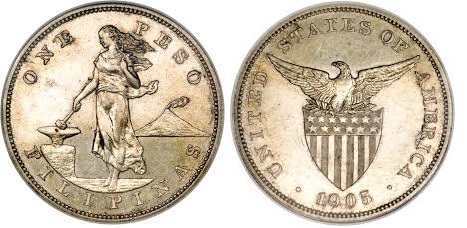Depending on what one’s have developed a keen interest into, people collects a variety of things. From stamps to keys; vases to flowers; mugs to paintings; oil cans to kitchen tins, I personally am fond of collecting coins.
Many people around me have always asked me how much can he sell his coins. A coin can have a significantly impressive amount depending on a lot of things. Rarity is the best factor for your coin to have a great value, another is the age of the coin, it’s significance historically and of course it’s condition.
I am writing this article and probably update this from time to time in accordance with research, for the collectors of Philippine coins. The following are coins of the Philippines really worth to collect:
1903s Fifty Centavos
1903 s fifty centavos have it legend to be very rare amongst USPI coins series in all denomination. According to coinquest.com its value could reach up to $1000 in average circulation condition due to its rarity of having 2 pcs only were known to exist.
1905s One Peso
1906s Peso
1906s one peso are said to be the king of all USPI series coins, I wonder why it richest highest value to the collectors wherein there are 201,000 pieces were minted. Though 250 pieces are known to exist since most of these coins brought back to US to be melted during the war.
Alfonso 20 cents
Carolus Reales
A very beautiful coin with some nice luster, from a private collection of Mr. Hodreal. Carolus coins are one of the most collected coins of Spanish-Phils series, you can’t hardly see one in this condition in auctions because collectors would rather sell it in a rocket price or keep it. The image of King Charles in these coins are superb that suggests Supreme Authority, which adds to the eye appeal for collectors.
Dos Mundos
Dos mundos coins or commonly called Pillar Dollars, were once commonly used coinage in the Philippines during the years wherein Bust Type coins are not yet introduced in new world colonies of Spain. Collectors always looking for these beautiful coins due to its exoticity.
ESPANA Unapeseta
Provisional Government coins of Spain with reclining coin, some of these coins had “Gobierno Provisional” instead of ESPANA and carries more value than this one, also a star with number inside carries premium.
Isabel Gold
Probably the most common gold coinage being used in the Philippines, comes in 3 denominations, 1Peso, 2Peso, and 4Peso.
Morgan
Perhaps the collectible coin from US is this one, a Morgan Dollar, cc or Carson City mints were said to be all collectibles and carries more premium than other mints, this dollar coins are also being counterfeited and I can even see some of these fake coins being sold in flea markets in the Philippine provinces.
The next time you stumble upon these coins, you surely hit the mark as you can sell any of these for a great price.
Happy hunting!!!
Cheerio!









Comments
Post a Comment